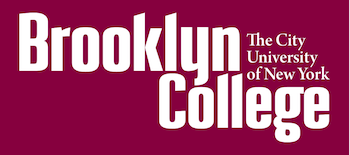Angela Robles, Anabel Guzman, Yanibelly Leonardo
Blog 1: Bomba & Plena
Bomba and plena are Afro-Puerto Rican beats that trace back to the early European colonial era, it was inspired by those that were enslaved. Bomba music was used as a way to express oneself spiritually and politically, with danceable beats and outspoken lyrics bomba helped build communities and identity. Instruments used in bomba are the drums, maracas and fua, these instruments create up to 16 different rhythms, bomba is not only music that moves people, its music Afro-Puerto Ricans are proud of as it was a catalyst for uprisings.
Plena was inspired by bomba at the start of the 20th century, it is used to tell stories and spread messages. Although inspired by bomba it only has one rhythm and has a variety of instruments used to create the rhythm, but a preeminent instrument is the pandereta, which is a hand drum that comes in a variety of sizes.
Bomba and plena are very dear to the Afro-Puerto Rican community, it has been around since the 17th century and continues to be a source of pride for many, it has even made its way to the cities in which they have settled, proving that it will always be cherished.
This video is an example of the Bomba and Plena music style. This musical style represents the Afro-Puerto Rican heritage. This musical style was a way for Puerto Ricans to express their cultural roots, as a result, this musical style has traveled with Puerto Rican immigrants everywhere.
In the first part of the video, the first song is “Aguatile”, which the musicians play with the drums and maracas, while the girl dances. Then in the second part of the video, the song playing is “Don Pacheco” which the musicians play with the “panderetas”.

Blog 2: A Lower Eastside Poem
The main idea of the “A Lower Eastside Poem” is that one has to be proud of one’s root, no matter the flaws of the place one came from. Throughout the poem, the author describes the bad aspects of his hometown and ends every stanza with the phrase “scatter my ashes thru the Lower East Side”. In other words, even though the Lower Eastside is filled with “hustlers & suckers” and pushers making sales … smoking pot and cocaine dealers,” the author expresses that “I stand proud as you can see pleased to be from the Lower East.” As can be seen, it doesn’t matter that the Lower East is a dangerous place with many flaws, the author still wants to be there even after death. When people want to be cremated they want their ashes to rest in a meaningful place and the author’s hometown is that place(at least for him). Through the imagery of his hometown and the repetition of the author’s wishes, the main idea is clearly demonstrated. One should be proud of where one comes from, it may have its flaws but it is still one’s origins and it made us into who we are today.
Miguel Pinero claims the Lower East Side to be dangerous and flawed, yet his last wish is for his ashes to be spread around the Lower East Side. This hows how proud he is of where he comes from and that he clearly enjoys the community it contains, this video shows people just living their lives as they usually would. This video shows one side of why he was proud of his community and how they lived among eachother.




